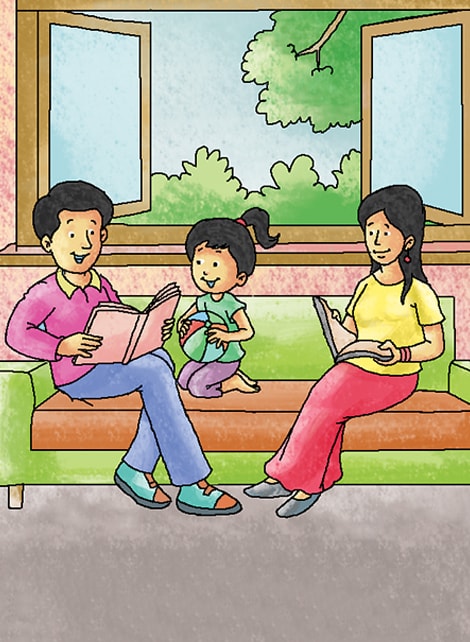Special Awareness Days
Last Wednesday of January
Bell Let’s Talk Day

Ready to Order?
If you are ready to order, please contact Customer Service:
Telephone: 1 (800) 361-6128 Fax: 1 (800) 563-9196
Introduction
One in five Canadians will experience a mental health problem or illness at some point in their lifetime. One of the biggest hurdles for anyone dealing with a mental health issue is overcoming stigma. It is a major reason why many people living with a mental illness do not seek help.
Mental health matters affect us all. The Bell “Let’s Talk Day” helps to promote awareness and action with a strategy built on 4 key pillars: fighting stigma, improving access to mental health care, supporting world-class research, and leading by example in workplace mental health.
For students, “Let’s Talk Day” is a good starting point for important discussions about viewing mental health in the same way we view physical health. Let’s remind our students that people who are dealing with mental health issues need kindness and support. Finding the right words and being sensitive to people’s needs is something all of us can do to be helpful.
For more information, visit the Bell Let’s Talk Tools and Resources page.
You may also be interested in the Bell Let’s Talk Day story on Ashley Cummings. She is Co-Chair of the Kids Help Phone Indigenous Advisory Council and lives in Whitehorse, Yukon. When she was a teenager, Ashley called Kids Help Phone when she was struggling. Now, she helps them create better mental health supports for Indigenous youth.

Activity Bursts
Grades K-2 - Language, Vocabulary
Ask the students to give you examples of what makes them:
- Happy
- Sad
- Angry
- Excited
- Afraid
- Surprised
Explain that everybody feels these emotions at some time or other. In fact, feeling and learning how to name emotions is a really important thing.
Remind students that sharing how they are feeling with someone else is also a good thing.
Teach students the following short poem and have them show how their face and body would look with each line.
Sometimes I’m sad and that is okay.
Sometimes I’m mad and I don’t want to play.
Sometimes I’m happy and my face has a smile.
Sometimes I want to be alone for a while.
Sometimes I feel like I just need a friend –
Someone on whom I can always depend.
So however I feel, please listen to me.
I’ll talk to you, and you talk to me!
Close by reminding students that sharing how they feel and talking (and listening) to a friend is important and helpful.
For additional ideas and lesson plans, visit canwetalk.ca and look for the section “Classroom Resources.”
Grades 3-5 - Language, Vocabulary, Non-verbal Communication
Have a discussion about the importance of recognizing and naming the various emotions that students experience every day. List these on chart paper or the board. Explain that people show how they are feeling in a number of ways. Explore examples (crying, laughing, etc.)
After identifying several emotions, gather the students and remind them that sometimes we use body language to express how we are feeling as well. Discuss.
Invite students to write an anonymous paragraph that describes a situation that may occur with students their age. The paragraph may begin, “Sometimes I feel…. “ Collect and randomly share the paragraphs, asking for suggestions on how to manage these feelings and also ways to help a friend who could be experiencing these feelings.
Remind them that if they see someone who is displaying these actions or behaviours, it would be a good time to talk to them and let them know that you will listen to them if they want to talk.
Note:
Give students the option to print “Please do not read” on their anonymous poems as some may use this opportunity to share something personal. Also explain that a “no names” rule is in effect.
For additional ideas and lesson plans, visit canwetalk.ca and look for the section “Classroom Resources.”
Grades 6-8 - Mental Health, Stigma, Bullying
Discuss the term “stigma.” Explain that sometimes we put labels on people just because of the way they act or look. Review the purpose of the Bell Let’s Talk Day and ask the students what they think the term “mental illness” means.
Explain that it is important to think about mental illness in the same way we think about physical illness. If someone has a physical illness or limitation, we accept and accommodate them. We need to do the same for people who have a mental health issue. The best way we can do this is to work together to stomp out the stigma that surrounds mental illness.
Watch the Bell Let’s Talk video about stigma.
As instructed at the end of the video, ask the students to work in pairs to think of things they can do to help end the stigma that surrounds mental health. Share.
For additional ideas and lesson plans, visit canwetalk.ca and look for the section “Classroom Resources.”
Grades 6-8 - Additional Activity
Mental Health, Language
There are many places to turn to for support if you are feeling sad, lonely, anxious, depressed or frightened. Ask students where they might go to for help if they were feeling vulnerable.
Note: This may be a sensitive area for some students. To reduce anxiety, you might want to offer the option of sharing these answers and discussions with one partner or writing their thoughts down, for their own use.
Explore the Kids Help Phone website as a class. A good starting point could be the section What is mental health?
After looking at the various components of the website, use a think-pair-share strategy to discuss these questions:
· Did you know about this website?
· Why do you feel this might be a good site to go to if you needed help?
· As a young person, what do you think are some reasons why people your age might turn to a site like this for help?
· What would you do if a friend needed help?
Remind students that we all experience many emotions as we grow up. By listening and communicating with friends and family and by reaching out to trusted resources, we can all help each other to get support if needed.






